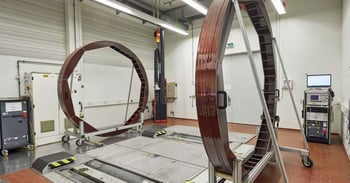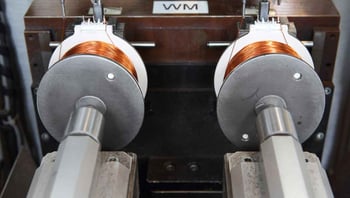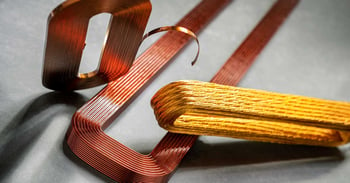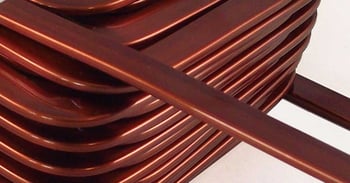Coil winding at a glance
Coil winding encompasses a variety of techniques used in the creation of electrical components, such as transformers, motors, and inductors. These methods include different winding styles, coil types, and wire materials, each providing unique advantages suited to particular applications.

Coil winding is an essential process in the manufacturing of electrical components, involving the winding of wire around a core to create inductors, transformers, and other electromechanical devices. The primary purpose of coil winding is to create coils that can generate magnetic fields when electric current passes through them.
The basics of coil winding revolve around understanding the core, wire, and the winding technique used. The core can be made from various materials, including ferrite and iron, while the wire is typically made from copper or aluminum due to their excellent electrical conductivity. The coil's performance largely depends on the precision and pattern of the winding technique employed.
Different types of coil winding techniques
Several coil winding techniques are used in the industry, each with unique characteristics and applications. These include random coil winding, orthocyclic winding, helical winding, and jumble winding.
Random coil winding involves winding the wire with no particular pattern, resulting in layers of wire stacked haphazardly. This method is quick and cost-effective but may lead to increased resistance and uneven magnetic fields.
Orthocyclic winding is a more advanced technique where the wire is wound in a structured pattern, typically in parallel layers. This method reduces resistance and improves efficiency by creating a more uniform magnetic field, making it ideal for high-performance transformers and inductors.
Helical winding involves winding the wire in a spiral pattern around a core, resulting in a cylindrical shape. This method is often used in components requiring high magnetic flux, such as solenoids and antennas.
Jumble winding involves winding the wire in a random, overlapping pattern, creating a dense, interconnected structure. This technique is used in components requiring high power handling capabilities, such as large transformers and high-frequency inductors.
Applications in electrical component manufacturing
 Coil winding techniques are integral to the manufacturing of various electrical components. Transformers, for example, rely on precise winding techniques to ensure efficient energy transfer between circuits. Inductors use coil winding to store energy in magnetic fields, which is crucial for filtering and managing electrical signals.
Coil winding techniques are integral to the manufacturing of various electrical components. Transformers, for example, rely on precise winding techniques to ensure efficient energy transfer between circuits. Inductors use coil winding to store energy in magnetic fields, which is crucial for filtering and managing electrical signals.
Motors and generators also depend heavily on coil winding. The coils within these devices generate magnetic fields that interact with other components to produce motion or electricity. Additionally, coil winding is used in the production of sensors, solenoids, and antennas, each requiring specific winding patterns to achieve optimal performance.
Most common coil types
Coil winding is predominantly utilized for creating air coils, bobbin coils, and toroidal coils, each serving distinct purposes in various applications. Air coils, known for their simplicity and lack of a core, are often used in applications where low inductance and high-frequency performance are required, such as in radio frequency circuits. Bobbin coils, on the other hand, are wound around a bobbin or spool, providing structural support and ease of handling, making them suitable for transformers and inductors in power supplies. Toroidal coils, characterized by their doughnut-shaped core, offer superior efficiency and reduced electromagnetic interference, making them ideal for high-performance transformers and inductors.
Wires used for coil winding
 In addition to the type of coil, the wire used in coil winding can be either round or flat, each offering unique benefits. Round wire is commonly used due to its ease of winding and versatility, while flat wire can provide better packing density and improved thermal performance, which is advantageous in high-power applications (edgewise windings). Furthermore, while copper remains the predominant choice for conductor material due to its excellent electrical conductivity and thermal properties, other materials such as aluminum are also used in specific applications where weight and cost considerations are critical. The choice of conductor material and wire shape can significantly impact the coil's performance, efficiency, and suitability for different applications.
In addition to the type of coil, the wire used in coil winding can be either round or flat, each offering unique benefits. Round wire is commonly used due to its ease of winding and versatility, while flat wire can provide better packing density and improved thermal performance, which is advantageous in high-power applications (edgewise windings). Furthermore, while copper remains the predominant choice for conductor material due to its excellent electrical conductivity and thermal properties, other materials such as aluminum are also used in specific applications where weight and cost considerations are critical. The choice of conductor material and wire shape can significantly impact the coil's performance, efficiency, and suitability for different applications.










